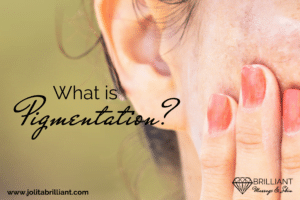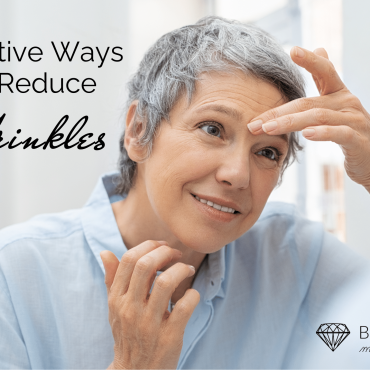What is Pigmentation?


What are these areas of pigmentation, why do we get them, and how can they be treated?
What is Pigmentation?
Pigmentation is a prevalent skin condition – most people will have an element of it as they age. Our old friend, the sun, cause it. Exposure to the sun, specifically to the UVA rays it produces, causes skin damage that penetrates deep into your skin.
The damaging UVA light ages your skin by stimulating the pigment cells to make melanin. Melanin is the substance that causes a suntan when you’ve been out in the sunshine without protection. Being out without protection can lead to unwanted dark patches that don’t appear straight away; they can take many years to show up, as much as two decades. So, the irresponsible sun worshipping you did in your teens and twenties that you thought you’d got away with – it might come home to roost as you hit your thirties!
Other factors can trigger pigmentation in women. The hormonal changes we go through in pregnancy and using the contraceptive pill are all known to be factors in increased skin pigmentation, especially if they are coupled with sun exposure.
It used to be that the only effective way to eradicate patches of pigmentation involved using lasers. While these are still an option, they can be too expensive and rather painful for many people. They are also only effective in lighter-skinned people.
Some high-strength skin bleaching creams contain steroids available on prescription, but these can irritate your skin and even be toxic. Hydroquinone-based products can be effective, but always ensure that you get them from a reputable salon, skin clinic, or qualified esthetician. If the proportion of active ingredients is too high, it can cause further damage to your skin. Never buy them online.
In-Salon Pigmentation Treatments
For a salon-based fix, try microdermabrasion, Intense Pulsed Light (IPL), or a skin peel to help lighten the pigment. Book now for a microdermabrasion session. Our licensed esthetician can offer you more specialized treatment suited for your skin.
With microdermabrasion, tiny crystals are blown onto the skin’s surface, taking off the dead top layer. It works well on superficial pigmentation and can also be used with other treatments like prescription creams and chemical peels.
A chemical peel involves a strong solution containing glycolic acid or similar, applied to the skin, making the top layers shed. It’s another option for mild pigmentation. You’ll need to be religious about applying sunblock afterward. Otherwise, it could just come straight back.
Intense pulsed light uses multiple light wavelengths to remove pigmentation areas and is especially good on lighter skin. Those with dark skin should have the esthetician test a small area to ensure it doesn’t over-lighten. IPL can be quite uncomfortable like lasers, but you’ll probably be given a cooling cream to ease the discomfort.
After treating your pigmentation, use UVA and UVB products to prevent its recurrence. And most importantly, avoid over-exposure to the sun. Ask in-salon for a brightening skincare product for pigmentation too, and keep your skin bright and pigmentation-free.
Brilliant Massage & Skin
Burlington, Vermont


